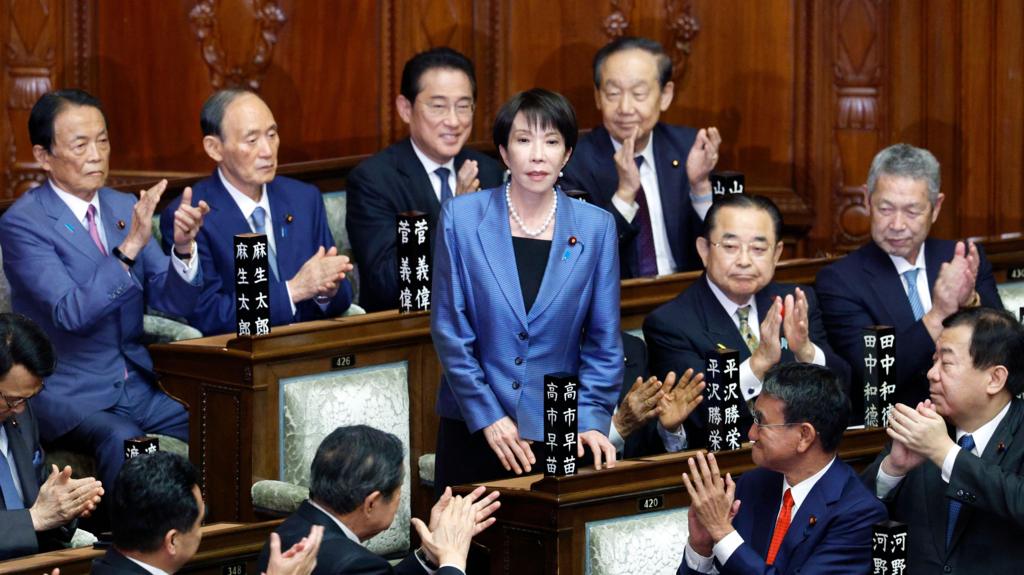TOKYO — Japan has entered a new chapter in its political history. Sanae Takaichi, a 64-year-old conservative and long-time lawmaker from the ruling Liberal Democratic Party (LDP), has officially been elected as the country’s first female prime minister after securing majorities in both the Lower and Upper Houses of parliament.
Takaichi, often dubbed “Japan’s Iron Lady” for her tough stance and admiration of former British Prime Minister Margaret Thatcher, won 237 votes in the 465-member Lower House and 125 votes in the 248-member Upper House — just above the required simple majority in both chambers. Her election marks a milestone for women in Japanese politics, a space long dominated by men.
However, the historic breakthrough is accompanied by deep skepticism at home — particularly among younger Japanese women who question whether her leadership will truly advance gender equality or simply reinforce the status quo.
A Historic Yet Complex Moment
Japan ranks 118th out of 148 countries in the World Economic Forum’s Gender Gap Index, reflecting persistent gender inequality across politics, business, and society. The country has repeatedly failed to meet its own targets to boost female leadership — including a 2020 goal to have women make up 30% of managerial roles, which was quietly pushed back.
While Takaichi’s rise shatters a centuries-old glass ceiling, many observers say her politics remain firmly traditional. She has publicly opposed same-sex marriage, supported male-only imperial succession, and rejected allowing married women to retain their maiden names — positions that have drawn criticism from progressives and younger voters.
“She’s not really going against the grind,” says Audrey Hill-Uekawa, a 20-year-old university student. “She’s saying the same thing as the men. We shouldn’t celebrate her just because she’s a woman — her policies matter.”
Another student, Minori Konishi, 21, adds: “Her win may not be as encouraging for young women as people think. She’s conservative and doesn’t speak much for women’s rights.”
A Protegé of Shinzo Abe
Takaichi’s political career has been closely tied to the late former Prime Minister Shinzo Abe, who mentored her and helped her rise through the LDP’s ranks. Like Abe, she belongs to the party’s hardline nationalist faction and has emphasized a strong defense policy, constitutional reform, and closer ties with the United States.
Her victory comes at a turbulent time for the LDP, which has seen four prime ministers in just five years, a string of political scandals, and collapsing public trust. The most recent crisis — a fundraising scandal that forced several cabinet resignations — has left the ruling party scrambling to regain credibility.
“Becoming prime minister in Japan can feel like drinking from a poisoned chalice,” says Professor James Brown of Temple University Japan. “The LDP’s internal factional battles are fierce — it’s not the opposition that brings leaders down, it’s their own party.”
Economic Challenges and the U.S. Alliance
Takaichi inherits a sluggish economy struggling with inflation pressures, an aging population, and ballooning national debt. She has promised to increase government spending, cut taxes, and pressure the central bank to maintain low interest rates — policies that have boosted investor optimism.
The Nikkei 225 index surged by 1.5% to above 49,900 points on expectations of her leadership, with markets betting on fiscal stimulus and business-friendly reforms.
Internationally, she has already established herself as a steady hand for the U.S.-Japan alliance. Former U.S. President Donald Trump congratulated her earlier this month after she won the LDP leadership race, calling her “a highly respected person of great wisdom and strength.”
Takaichi responded on X (formerly Twitter) that she was “very pleased” with Trump’s message and looked forward to strengthening bilateral ties.
A Symbol of Persistence
Despite criticism of her conservative stance, Takaichi’s personal story has inspired many. Born in Nara Prefecture, she faced resistance from her own parents, who discouraged her from pursuing higher education because she was a girl. She worked her way through university, later entering politics without the benefit of Japan’s dynastic political families.
She has also spoken candidly about her personal struggles — including infertility and caring for her husband after his stroke.
“You cannot be what you cannot see,” says Kathy Matsui, the economist who coined the term “Womenomics.” “Even if her policies are conservative, her very presence at the top sends a powerful message to Japanese girls — that leadership is possible.”
The Road Ahead
For now, Takaichi faces enormous pressure to rebuild trust in her scandal-hit party, revive the economy, and navigate Japan’s position between Washington and Beijing. Her first test will be forming a new cabinet — expected to balance loyalty, experience, and gender representation — before heading to the Imperial Palace for the attestation ceremony.
Whether Takaichi ushers in genuine change or remains a symbol of continuity will depend on her actions in the coming months.
As one Tokyo lawmaker put it:
“This is a historic day for women in Japan. But history only matters if it changes the future.”

